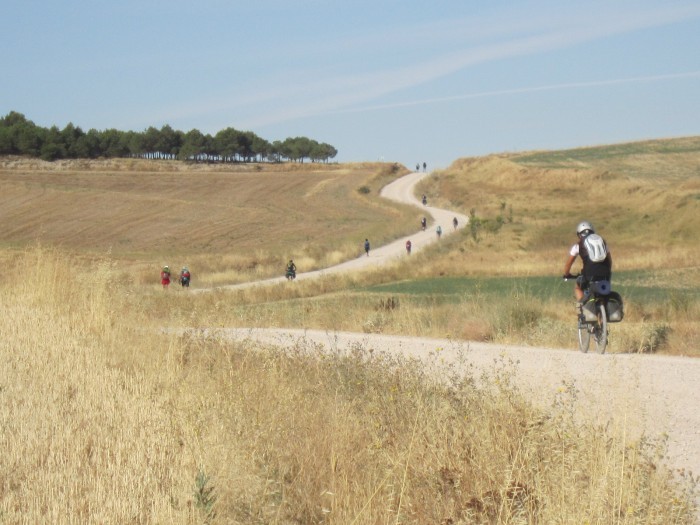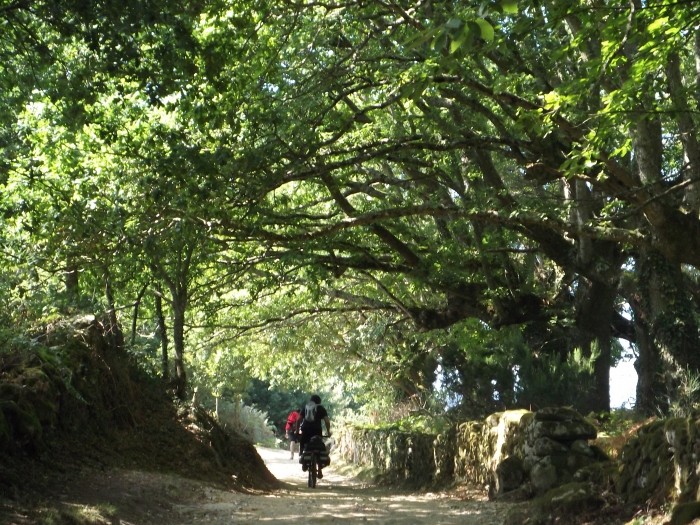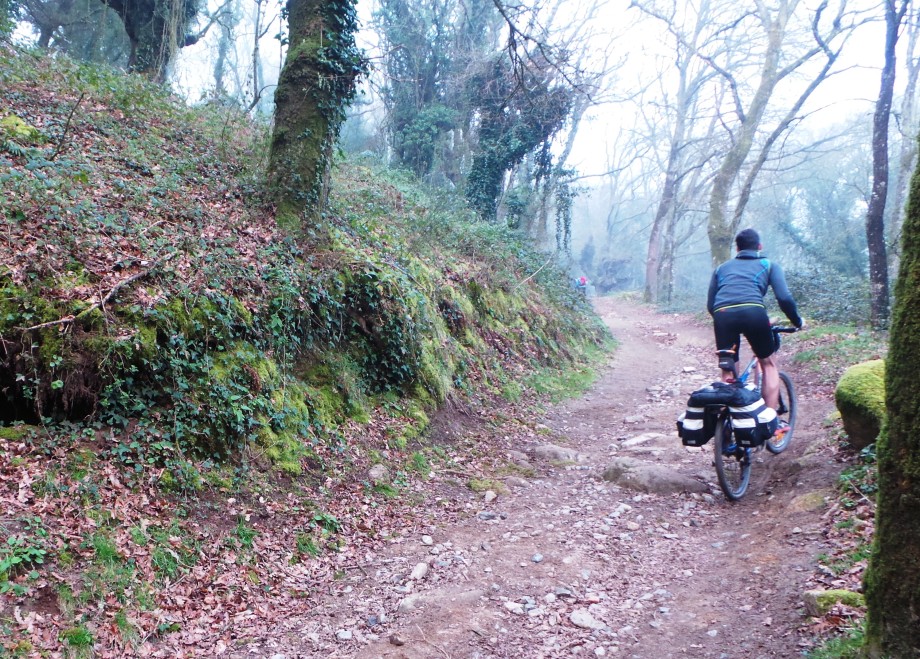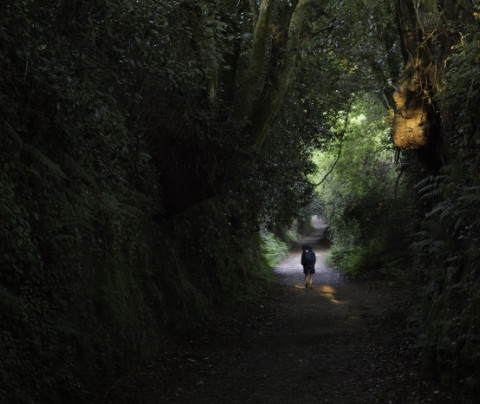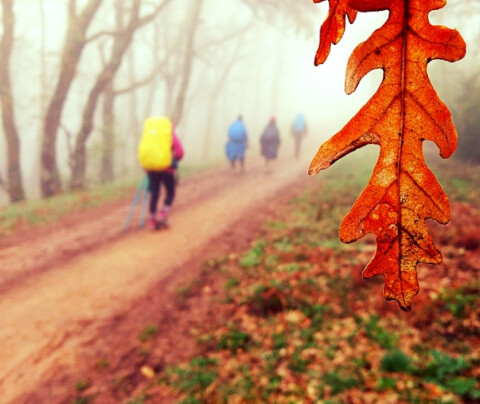Tips to do the Camino
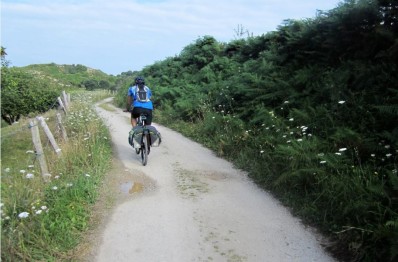
The Camino de Santiago by bike is winning audience. Only in 2024, a total of 21,406 people got their Compostela after covering at least one Jacobean Route on two wheels.
A complete different experience to the one those pilgrims who decide to walk the Camino get: the stages are longer, the physical preparation is a little bit harder, you don’t get preference over the pilgrims who do it by foot…
On the other side, you need less days to complete your route and have a wider freedom that allows you to know places close to the Camino which are not on the official routes.
The biggest difference, however, is that not every Jacobean Route is apt to being covered by bike nor are all the seasons good for this purpose.
If you are a bike lover and are thinking about doing the Camino de Santiago on two wheels, in this article we detail you which ones are, for us, the best Routes to do it, where to start in order to get the Compostela and which is the best season to enrol in this adventure.
Camino Francés
The best option to get started on the Camino de Santiago is doing the Camino Francés. It is, without a doubt, the one with most people, the one with most services (hostels, hotels, restaurants, etc.) and the one with the best Jacobean spirit during all the year. Besides that, the Camino Francés is bikable in the majority of its trajectory and, except some precise stretches, one can bike the original route.
Winter will always be a hard moment for pilgrims but, excepting some mountain stages, the Camino Francés is apt during the whole year for those pilgrims who bike. From Saint Jean Pied de Port, pilgrims usual ride the whole Camino Francés in twelve or thirteen stages, with an average of 50 to 60 kilometres per day. Of course, the number of stages is just indicative, since it depends on the pilgrim’s physical condition, on the weather and on the time one has available for doing the Camino.
If you opt for the Camino Francés through Aragón, from Somport to Puente La Reina –place where it joins the Camino Francés through Navarra–, you will have three stages ahead of you: Somport-Santa Cilia, Santa Cilia-Sangüesa and Sangüesa-Puente La Reina.
For obtaining the Compostela, one should cover a minimum distance of 200 kilometres before arriving to Santiago. That is why, if you have few time available and the goal is to arrive to Compostela and getting such recognition, the best starting point is León and the one covering the minimum of distance to obtain the Compostela is Ponferrada. They will be five days of biking where one can discover places with a big Jacobean relevante such as León, Astorga, Ponferrada, Villafranca del Bierzo, O Cebreiro and Sarria, among some others.
Vía de la Plata
Bike lovers will find in Vía de la Plata an extraordinary experience. Almost every stage is bikeable, the most abundant ones are gravel paths and there is a large number of kilometres through trails.
This route by bike is the favourite one in the Camino by the majority of the pilgrims, but there are some things to take into account: in case of rain, the gravel paths become impossible to ride, the signalling tends to be irregular in some points and there are fewer hostels than in other routes.
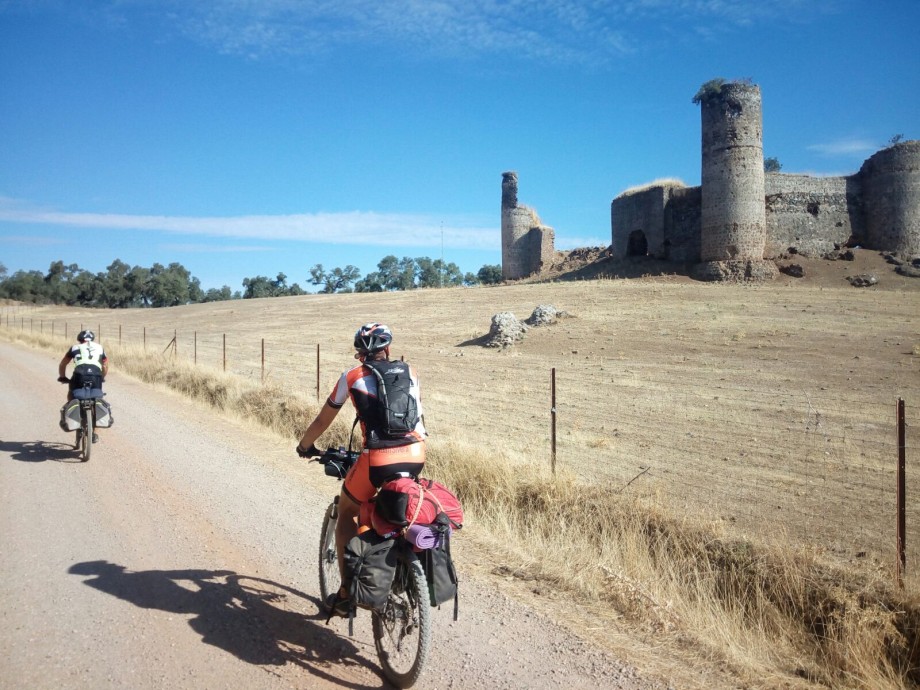
The best time to do the Vía de la Plata by bike is during the spring, and the summer months are directly discarded due to the high temperatures. Fourteen or fifteen stages must be covered in order to arrive from Seville to Santiago. And in order to obtain the Compostela, the minimum distance is from A Gudiña.
Camino del Norte
The beauty of Camino del Norte, covering the Cantabrian Coast from Irún to Ribadeo, turns this Route into an excellent option for the biker. Even though it presents some difficulties compared to the previous ones, it is pretty bikeable.
A wide part goes through tarmac, through local roads with few difficulties and without a lot of traffic, what eases the experience a lot. But it is not always possible to follow the original trail, since it was originally thought for walkers, so it is recommendable to plan the route correctly and to bike with a GPS if possible.
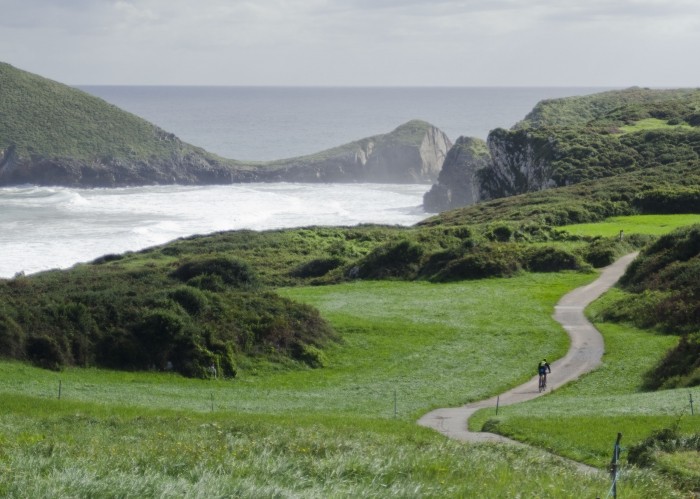
Spring and summer are the most recommended seasons for Camino del Norte by bike, since the temperatures are soft and the coastal villages are at their prime of beauty.
The whole route can be done in 15 stages (with an average of 50 kilometres per day). Even though the stages that go through the Basque Country are the most beautiful ones, the minimum distance that a biker must cover in order to obtain the Compostela is from Tapia de Casariego (5 stages).
Camino Portugués
The Portuguese route is one of the least demanding ones in terms of physical conditions, and that is why it is the perfect Camino de Santiago for first timers. The majority of the distance between Lisboa and Santiago de Compostela goes through tarmac or gravel paths, what eases the biking a lot.
Between April and September is the best time to do the Camino Portugués by bike, since it counts on soft temperatures. The recommended starting point for the Camino Portugués and obtaining the Compostela is Oporto, a beautiful city with great links, but the minimum distance can be covered from Póvoa do Varzim, a few kilometres north.
Camino Primitivo
The Camino Primitivo is, without a doubt, the harder Camino de Santiago. It can be covered by bike, but you must know that it is not the most apt one to do so: there are several climbs, the paths are full of stones and gradients that prevent the path from being cyclable, and there are some stretches that are directly impossible to bike.
Besides that, it requires an extraordinary physical condition. The extreme hardness of the Camino is recompensed by its amazing beauty, but it might not be enough compensation.
Those who choose to bike the Camino Primitivo must avoid the winter months, where the conditions become extreme. This route can be covered in nine stages and, for obtaining the Compostela, it is enough to do it from Grandas de Salime.
If you are going to do the Camino de Santiago by bike, we remind you that in Correos we have our Paq Bicicleta service available, with which you will be able to send your bike to the beginning of your Camino or back home once you arrive to Santiago. That way you will avoid logistics problems when transporting your vehicle.
If you have any more doubts, here we leave you some tips and answer some of the most frequently asked questions by the biker pilgrims. And, for ending, we encourage you to visit Correos Market, Correos market place where you can find every kind of articles for your Camino de Santiago by bike, such as a Pack Credencial with a tech shirt.
¡Buen Camino!
Your email address will not be published.
Mandatory fields are marked with *




